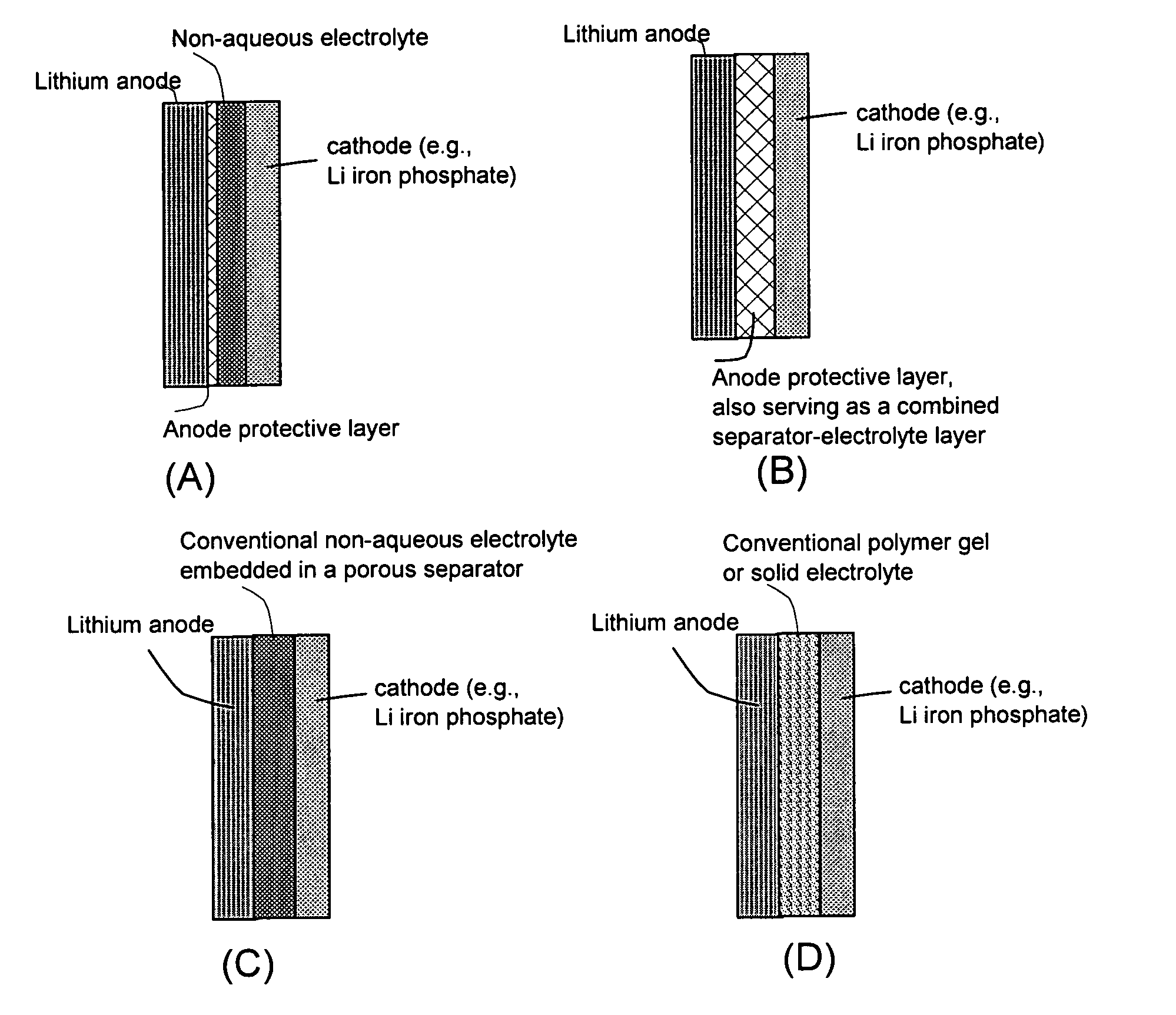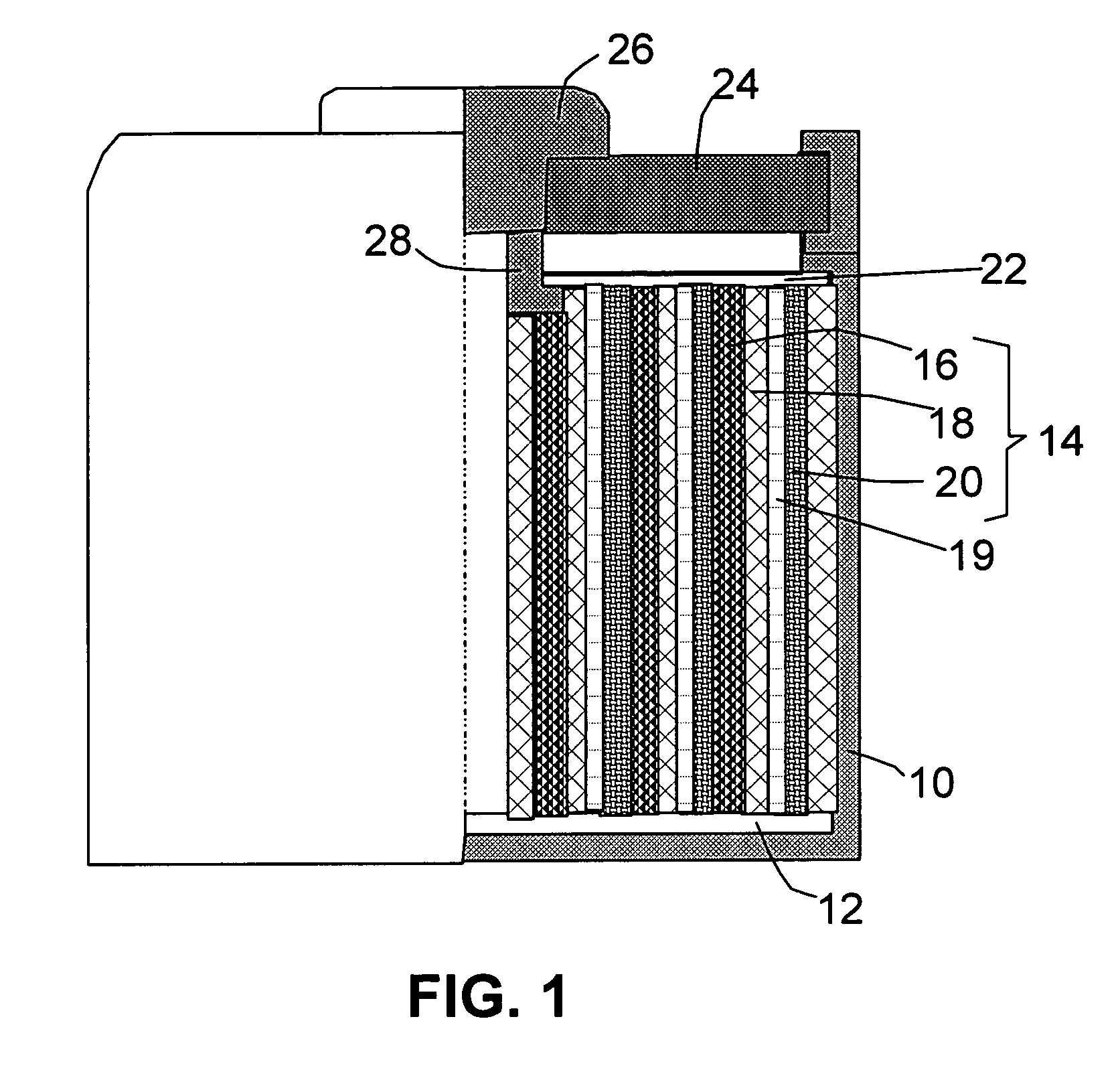Anode protective layer compositions for lithium metal batteries
a technology of anode protective layer and lithium metal battery, which is applied in the field of nanostructured anode protective layer material in secondary batteries, can solve the problems of internal electrical shorting and thermal runaway, unclear dendrite-preventing mechanisms of these films, and large-scale commercialization, and achieves long cycle life, stable and safe
- Summary
- Abstract
- Description
- Claims
- Application Information
AI Technical Summary
Benefits of technology
Problems solved by technology
Method used
Image
Examples
example 1
Samples 1, 2, and 3 & 1a, 2a, and 3a
[0080]Soft matter phase materials for Samples 1, 2, and 3, were prepared by mixing fine oxide particles, SiO2 (with an average diameter of 23 nm), TiO2 (95 nm), and Al2O3 (285 nm), respectively, with a Li salt solution. For Samples 1, 2, and 3, the non-aqueous lithium salt solution was prepared by dissolving LiPF6, LiClO4, and LiCF3SO3, respectively, in a mixture of ethylene carbonate (EC) and dimethyl carbonate (DMC) at a 1:1 volume ratio. For the preparation of all soft matter phases, oxides were preheated to 300° C. for 24 hours to eliminate potential effects due to physically adsorbed water. Conductivity was measured using AC impedance spectroscopy (frequency range: 1-107 Hz; amplitude of oscillating voltage: 0.1 V) by sandwiching the electrolyte between stainless steel electrodes in a custom-made cell. All preparation and loading of samples into cells for conductivity measurements were conducted in a glove box under a pure Argon atmosphere wi...
example 2
[0086]The soft matter phase-impregnated membrane prepared in Sample 1a was incorporated as a protective layer in a lithium metal battery, schematically shown in FIG. 2(A). Approximately 20% by volume of SiO2 particles with an average diameter of 23 nm was dispersed in the LiPF6 / EC-DMC solution and impregnated into a membrane of approximately 50 μm thick to form the desired protective layer. An additional separator layer made up of a glass fiber mat of approximately 100 μm thick, soaked with the same electrolyte solution (LiPF6 / EC-DMC) but without oxide particle, was disposed between the protective layer and a cathode layer.
example 3
[0089]The soft matter phase-impregnated membrane prepared in Sample 3a was incorporated as a protective layer, as well as a combined separator-electrolyte layer, in a lithium metal battery, schematically shown in FIG. 2(B). Approximately 20% by volume of Al2O3 particles with an average diameter of 285 nm was dispersed in the LiCF3SO3 / EC-DMC solution and impregnated into a membrane of approximately 100 μm thick to form the desired protective layer.
PUM
| Property | Measurement | Unit |
|---|---|---|
| size | aaaaa | aaaaa |
| size | aaaaa | aaaaa |
| volume fraction | aaaaa | aaaaa |
Abstract
Description
Claims
Application Information
 Login to View More
Login to View More - R&D
- Intellectual Property
- Life Sciences
- Materials
- Tech Scout
- Unparalleled Data Quality
- Higher Quality Content
- 60% Fewer Hallucinations
Browse by: Latest US Patents, China's latest patents, Technical Efficacy Thesaurus, Application Domain, Technology Topic, Popular Technical Reports.
© 2025 PatSnap. All rights reserved.Legal|Privacy policy|Modern Slavery Act Transparency Statement|Sitemap|About US| Contact US: help@patsnap.com



